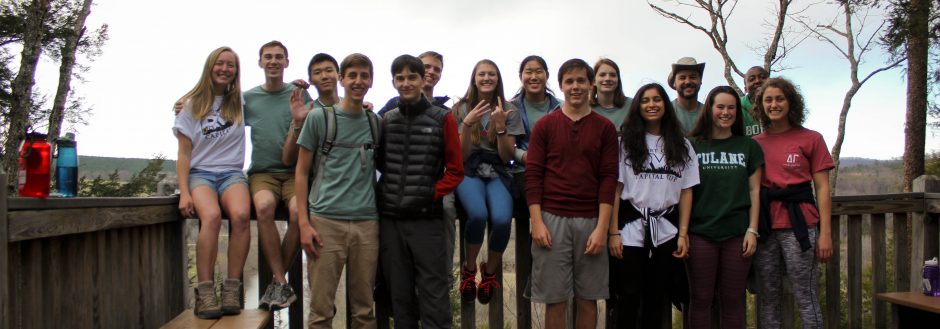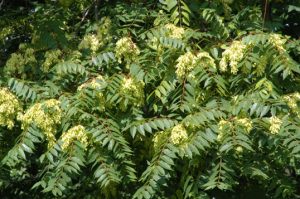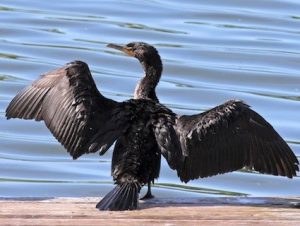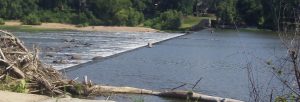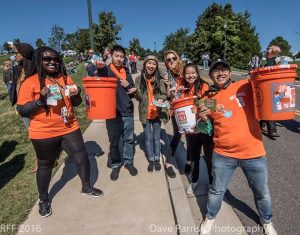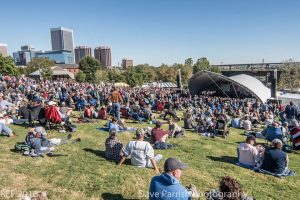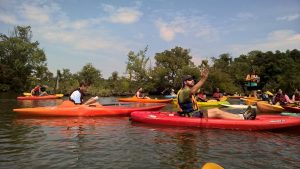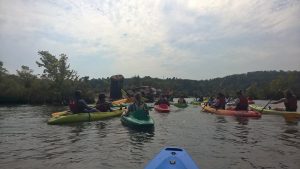Portlandness Blog 1
* Both books emphasize the study of place. Define the geographic concept of “place”. Illustrate the concept by describing the place where you are this summer.
A place is defined by the physical and human characteristics of a location. This summer, I’ve been doing research in Richmond. The physical characteristics of the place I am in include the buildings, the lake, the general layout of campus, and its absolute coordinates. The human characteristics include the people I am with and all of our cultural differences, the languages spoken, the forms of transportation used – basically everything that comprises the daily lives of the people here. Richmond as my place is my apartment, my lab and lab group, my friends that I live with and hang out with, where I get my food, and where I go in my free time, like the gym or the river. These things comprise my experience for the summer, and therefore define my place.
* Before reading this book, think about your preconceived idea of the City of Portland. From this introductory material, describe two things that matched your preconceived notion of Portland. Describe two things that you had not previously associated with Portland.
My idea of Portlanders before this book was all hippies and environmentalists who are super friendly and love to eat locally. I was pretty much right with my ideas – the 100 mile diet is very popular, many residents use green and renewable energy sources, and most everywhere in the area the majority votes with their environmental conscious. One thing I just did not know about Portland was how big beer is. I learned that Portland has a reputation for having more breweries than any city in the world, which is quite impressive. I also had this preconceived notion that literally everyone is a born and bred liberal, but the population density map on page 25 that shows that the further out from the heart of Portland you go, more people vote conservatively.
* Why did the authors choose to introduce Portland as a Cascadian City? What does it mean to be a Cascadian City?
I think one of the major points of the introduction is that maps have tremendous power to influence how we picture a place. The northwest region has always been introduced to me by the political boundaries created to separate the states. The authors introduce Portland as a Cascadian city as a way to break down the preconceived notions about places and borders and to make us look at the northwest region from a new perspective that can be molded almost entirely by this book. Calling Portland a Cascadian city simply means that it and the area around it should be organized by “ecological realities” and “foremost understood as a land of cascading waters” (p 16).
* What is the essence of Portlandness? Why are maps a useful way of presenting this idea?
From this introduction, I think the main essence of Portland is comprised of certain qualities of the people. The list on page 23 sums up the very small knowledge that I have about Portland from this section – the people are environmentally conscious and love the outdoors, they’re mostly liberal, love their beer and coffee, and the “artsy” districts of most cities couldn’t hold a candle to Portland. The essence of Portland is built by its people, who typically have these intrinsic qualities that are very apparent to tourists and outsiders. The maps in this book illustrate the essence of Portland from several different perspectives, so we as the reader can vicariously experience the city through those who know it best – the people who actually live and grew up there.
Portlandness Blog 2
* What is the main concept illustrated in this section (e.g., what is an Urban Landscape)?
A landscape is defined as all of the visible features of an area, mostly considering the aesthetic appeal of the area. Therefore, an urban landscape is all of the aspects that make up the landscape of a city. It goes further than a normal landscape because it stresses the importance of a holistic view of the spaces and structures of the city. This section uses various types of maps to explain the different aspects of Portland’s urban landscape.
* What perspective did you choose to read for this section (e.g., Bridgetown, Under the Bridges, Where the Sidewalk Ends… or Naked City)? Why? How would you describe Portland according to this perspective in a few sentences?
I chose the subsection “Your Attention Please – Billboards and other Visual Noise” to look at Portland’s urban landscape. I chose this perspective because I thought it was most applicable to Richmond and other places I have been, so I can compare this type of urban landscape to previous experiences. The one thing I wish this section included is statistics – all of the maps simply compare the visual noise to other streets in Portland, so I only know that 82nd Ave has way more visual pollution than Interstate Ave, but not how much there actually is on either street. Based on the information that is given, I would describe the heart of Portland as having a lot of visual noise, with the intensity gradually lessening on the roads that lead away from it.
* What map would you produce for Richmond to represent this concept? Why? What would be the title of the map? What might the map look like? (go ahead and sketch it, if you feel you can. Don’t worry about the technology, if you can’t post
I would do a choropleth map, like they used in this section, which would show the density of advertisements on Richmond’s campus. This would best show how much “visual noise” is found around campus because the key would include numbers and you could know how many advertisements are found in each part of campus. On this map, places like commons that always have a lot of advertising would be shaded darkest to represent the high amount of advertisements, places like dorms would have the lightest shade because there are not usually a lot of advertisements, and other buildings and areas would be shaded somewhere in between. This map would be titled “Where Organizations Market around Campus.”
Portlandness Blog 3
* What is the main concept illustrated in this section (e.g., what is an Urban Landscape)?
The main concept of this section is “Views of the City.” This sections calls people to experience a city with all of their senses, not just their eyes as someone usually would. It is difficult to define Portland in one experience because everyone will experience the city differently depending on their emotions, feelings, and ideas about it. Therefore, this section takes general facts, such as population density, and several different opinions into consideration when describing the Views of the City.
* What perspective did you choose to read for this section (e.g., Bridgetown, Under the Bridges, Where the Sidewalk Ends… or Naked City)? Why? How would you describe Portland according to this perspective in a few sentences?
I chose to look at the Views of the City through Psychogeography. I had to make a lot of mental maps in middle school and my human geography class in high school, so it is interesting to see how other people view their home city and how accurate, or inaccurate, they are about it. As far as accuracy, the map of the Willamette River shows that most people think the river is far more east than it actually is, and almost no one knows exactly where it is within Portland. I think this speaks volumes for how people understand their city – people know relative directions, and could tell you landmarks that are along the river, but cannot actually pinpoint where something is on a blank map. This is further illustrated by the “Composite of student’ mental maps of Portland,” as landmarks and the type of people that live in the general area are included instead of actual parts of the city. This map is also laid over an outline of the city, and the students are pretty off as far as their dimensions. I think this page is one of the best representations of what is important to Portlanders when they view and think about their city.
* What map would you produce for Richmond to represent this concept? Why? What would be the title of the map? What might the map look like? (go ahead and sketch it, if you feel you can. Don’t worry about the technology, if you can’t post
While trying to explain to my mom where I’d be living next year, I drew a mental map of Richmond’s campus with the buildings that are important to me. I basically drew a circle as the outline of campus and put circles for the buildings, so it was clearly very detailed and advanced. To explain the “Views of Richmond,” I would create another mental map, but with better dimensions and I would try to get the shape of campus a bit more accurate. However, if the map is just for myself, I would only include places that are important to me – Gottwald, Jepson, Dhall, Gray, the gym, etc. I would probably ignore B-school and the Law school simply because I don’t go there because it’s so far been irrelevant to my Richmond experience. Someone on the mental map of Portland wrote “North-ish” for the northern part of the city, and that is pretty much how I’d handle the parts of campus I don’t know a lot about. Essentially, my map would be very elementary, but might be able to give someone a good enough view about my perspective of Richmond.
Portlandness Blog 4
* What is the main concept illustrated in this section (e.g., what is an Urban Landscape)?
This section is titled “Social Relations,” which is defined in the book as “how people relate and get along… or how they don’t.” Most of the parts in this section compare race and income levels of people in Portland, and how different people respond to each other. Portland is generally known for everyone being overly friendly to one another and even visitors, but this section highlights where this is not always the case, like with the prevalence of gentrification and ignoring or simply not knowing about the amount of homelessness.
* What perspective did you choose to read for this section (e.g., Bridgetown, Under the Bridges, Where the Sidewalk Ends… or Naked City)? Why? How would you describe Portland according to this perspective in a few sentences?
For this section, I chose to write about “The Invisibility of Homelessness.” During the school year, I volunteer at an organization called Youth Life, which is located in Delmont. On the way to get there, I always see the same homeless people out on the streets, and I think about them a lot, which is why I am interested in homelessness in Portland. In Portland over the past couple decades, homeless people were removed from wherever they were living and given campground sites to live in. This is a wonderful idea and gives the people a safe place to stay, but the campgrounds are very out of the way, so most Portlanders never see it, and they forget about the homeless. Therefore, the homeless will rarely interact with those who have homes, and the Social Relationship between the two communities is virtually nonexistent.
* What map would you produce for Richmond to represent this concept? Why? What would be the title of the map? What might the map look like?
I think another choropleth map, titled “Homelessness in Richmond,” would best represent the homeless people in Richmond. Areas of Richmond would be shaded darker if there is a higher number of homeless people and lighter if there are less homeless people. I would also include the homeless shelters on the map. I would expect that regions near the homeless shelters would be shaded the darkest because people would likely stay near shelter and safety.
